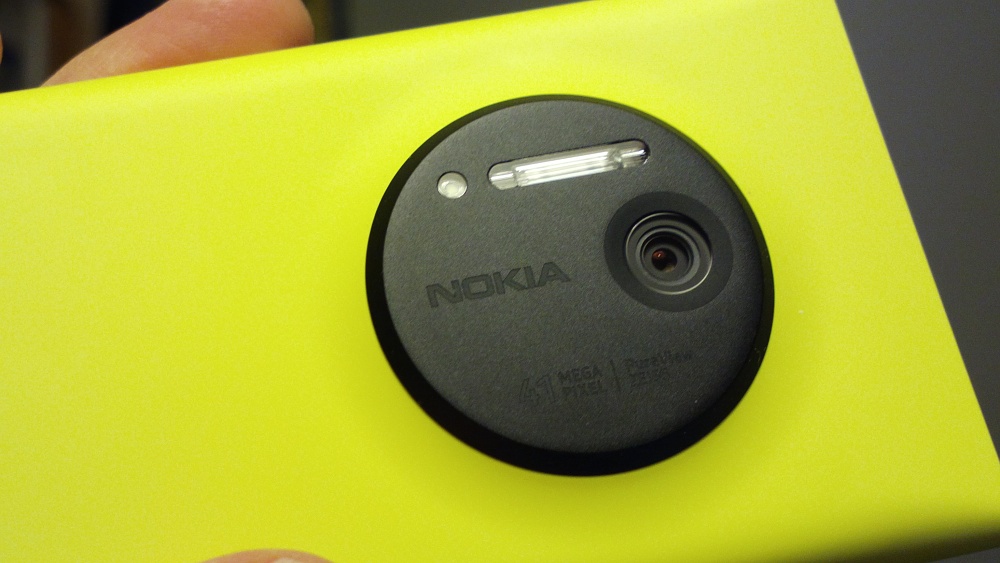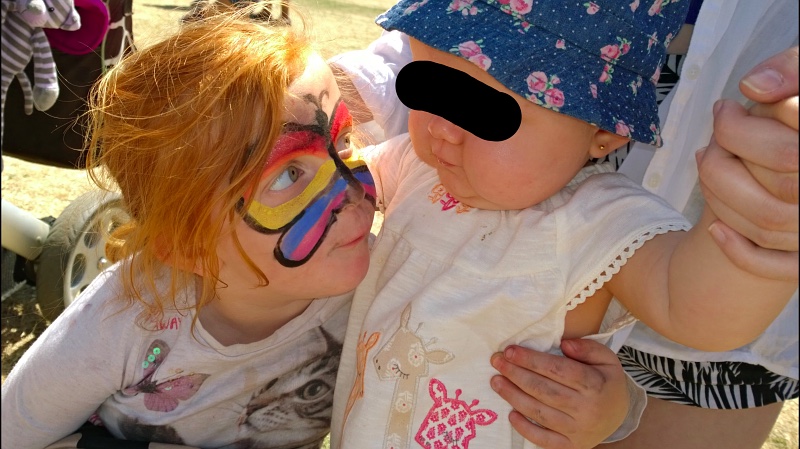[And before commenters leap into action, in fact, you can still buy the Lumia 1020, but you have to look for it online - it's certainly not being made any more, but there's inventory in some distributors and, of course, through the likes of Amazon and eBay!]
The risk I always take when starting a feature praising the Lumia 1020 is that I'll get shouted down that I've said it all before and that the phone is too old and too slow. Which is partly true. But I'd have taken a bigger risk if I'd taken almost any other smartphone to the school fayre because I wouldn't have got some of the priceless family shots I did. or at least not all of them.
You see, the majority of the shots most people take at these sort of events could be taken with any camera, with any camera-phone. And they'd be unremarkable. The day opened with me noticing a granny taking a photo of her grandson on some play equipment using a touchscreen phone of some kind (and no, it wasn't a Lumia, in case you were wondering). But she was a good 15 metres away and shooting into the brightest part of the sky - when she looked at the photo later she'd have seen a dark blob against a blue sky. And that sums up the 'normob' attitude to camera phone photography. Just point and snap and hope for the best, with predictably disappointing results.
Whereas devices like the Lumia 1020 (and the Nokia 808 PureView before it) are designed for people who have slightly higher ambitions. And I became very aware that I was holding something much more capable as the day wore on.

The challenges
The problems of shooting photos at a sunny school fayre then:
- there are loads of people and kids, always getting in the way(!), general chaos, and you can't always get close to the child (relative) you're trying to shoot. Think bouncy castle, think school song, think coconut shies, and so on. Lots of kids, lots of action and no little or no preparation time in each case, not least that you're not always sure what your subject is going to do or where they'll go next!
- allied to the point above, with so many other children around and with everyone being a bit funny (in these pedophile days) about you taking snaps of their kids, it's surprisingly hard to get your own family and relatives without inadvertently getting someone else's as well!
- the light - half the time it'll be fine, with the sun in the arc behind you, in which case any imaging device will do well. But when the child is facing you with the sun behind them (as is natural and almost always the case, you can't expect them to squint into the sun!), how the heck do you photograph their nicely made up, face-painted butterfly? You can't, you just get a dark silhouette.
- the light (again) - when it's so sunny and bright, how on earth do you see what's on your phone screen, i.e. what you're shooting, and how do you then review the pictures and show them to others as proof when all people can see is a reflection of the sky? Cue much shielding of the phone screen under a garment, no doubt?

Enter the 1020
Now, happily, I had solutions to the above problems, at least mostly, because I had a 1020. Which is now two years old and there's still no replacement in sight. On any platform.
The (alleged) new Lumia 940 and 940 XL will only get part of the way to the same functionality, as will even the very best of the Android flagships. How IS IT POSSIBLE that I'm forced to use a 2013 phone because there's still nothing released since to match its camera? Am I, a red-blooded Western male with a family, so very different from the rest of the phone-owning populace? Am I just fussier? Or am I just more knowledgeable about what's possible? Or do most people just go 'Sod this, I'm taking my standalone compact camera next time!'...?
So, with that, a few more quotes and comments I received from others. I'll leave off the implied "Where can I buy that phone?" bit because only one person actually said that out loud, but I'll bet it was going through some of the others' heads!
"That's a great photo, can I have a copy?"
I'd just snapped a facepainted (small) relative and was showing the photo on the 1020 screen in the full, if slightly oblique, sun - and it was still eminently visible and enjoyable. Now this is down to Nokia's ClearBlack Display (CBD) screen technology, of course, and certainly isn't unique to the 1020, several Windows Phones have it (most recently the 640 XL) but I wanted to mention CBD because it's still, in 2015, a clear differentiator over the Android and iOS competition.
"Wow, that's good, I can see [them] really well! How did you get so close?"
Photographing a 6 year old participant in a school song, in a group of 30 (i.e. a class) from a distance of around 10 metres, I was able to use the lossless zoom into the 41MP sensor of the 1020 to bring up a 3x zoomed group shot and then applied a bit of technical license in cropping down from the 5MP zoomed shot to a 1MP (phone-screen sized) image of just the child in question 'doin' their thang'(!)
"That's incredible. Ahhhh..."
Followed by the sound of a jaw dropping, as I showed a perfectly lit shot of a moment when my 5 year old niece hugged her 1 year old cousin, shot into the full sun. I was crouched down, obviously, but the secret of lighting the children's faces is the Xenon flash, of course. Having waxed lyrical about this for winter/dark/indoor shots, I've always found it to be very useful even in the height of summer too. Forcing flash 'on' in the Lumia Camera settings on the brightest of summer days seems completely 'wrong', but 'fill in flash' is a recognised photography 'trick' and you can see the results below - the same photo on any 'normal' phone camera would have been black silhouettes where their faces should have been. [I haven't bothered blocking out my niece's face, since she did that herself in transforming to a butterfly! Oh, and no, before you ask, LED flash wouldn't get remotely close to having an effect here.]

"Those colours are amazing!"
This was back inside, showing a few of the photos to a relative, she couldn't believe the colours coming from the 1020 screen. Now partly this was the purity and richness of the colours captured, but in this case it was also due to the AMOLED screen, known for its 'popping' colours. And yes, the Lumia 930 would also have sufficed here, or perhaps any of the other AMOLED-screened camera phones on the market. But it's still noteworthy how AMOLED impresses, despite the technologiy's disadvantages.
________________
As hinted above, the real answer to my 'Why can't we have a camera phone this good in 2015?' is that smartphones have all headed to the middle ground, the compromise, and that a manufacturer would say "If you're fussy enough to need all the above, just take along a proper camera - it'll do an even better job, as it'll have optical zoom and an even brighter flash!"
They're right, of course, that's the obvious solution for the shutterbug on a challenging day out. But am I totally alone to believe in true convergence, that I want my smartphone to completely replace a camera, no matter what the event or conditions? Nokia, with its 808 PureView and then Lumia 1020, managed to get two models out the door which almost perfectly matched this converged need, in 2012 and 2013. But nothing since, and we haven't even smelt a whiff of a Lumia 1030 or similar yet. And Samsung abandoned its "K" line after one model, the K Zoom, again in 2013, so there's nothing elsewhere in the phone world either.
Again, am I a voice crying out in the wilderness here? When someone asks YOU "Wow, where can I get a phone that has a camera like that?", wouldn't it be great to point them towards a shop where the brand new 1040 (or whatever) had just been released?
I do fear that any 1040 in development, with Xenon flash and large sensor again, may have been killed over the last 12 months with all the cuts at Microsoft. Satya (Nadella) and Terry (Myerson) - prove me wrong. Please!
